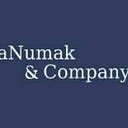How can chief human resource officers navigate inflation globally?
Inflation has been at its highest level over three decades, producing huge worldwide issues, and it shows no prospects of abating shortly. This presents chief human resources officers (CHROs) with a window of opportunity to take immediate action, however jarring the current environment may be.
As living expenses continue to rise and the labor market remains competitive, employees will be compelled to explore alternative career paths. To stay competitive, CHROs must ensure they have the flexibility to give the resources required to achieve business results without jeopardizing their long-term competitiveness.
Reflecting on the preceding two to three years, CHROs guided their organizations through pandemic-related adjustments to working practices. However, there is a new obstacle. They must now prioritize establishing a clear vision for workforce initiatives, creating a compelling employee value proposition, and modifying their workforce ecosystem.
What can businesses do to solve the issue?
Here are three ideas for reducing employee turnover and assuring the most capable and productive crew:
1)Strategic decision-making for the short- and long-term workforce:
CHROs must be more proactive in workforce planning to anticipate attrition and staff their companies for success in light of the volatile labor market and increased customer expectations.
Together with finance, CHROs can play a significant strategic role in balancing demands, ensuring flexibility, and supporting the firm’s growth with the appropriate workforce size and flexible model.
a)Adjust your perspective: Review your skills projections for various job kinds and occupations. Utilize scenario-based planning to evaluate potential outcomes. Differentiate between the information required to maintain operations and capabilities that are “good to have.” The modeling provides insight into the future base case, bear case (pessimistic case), and bull case (optimistic case) situations (bright point). Here, HR may play a more strategic role, taking ownership of the labor line of profit and loss by collaborating more closely with finance and other C-suite officials.
b)Using a zero-based basis for the work (ZBW): This mentality seeks to identify and question needless activities, assess and optimize organizational inefficiencies, and align current abilities across managerial functions, job kinds, and purpose-related duties. As a result, ZBW eliminates unnecessary expenses to reinvest the savings in innovation and future growth. Moreover, according to our experience, implementing this strategy generates revenue and enhances the employee experience, as future workloads will be purpose-driven and suitably resourced.
c)Be adaptable and imaginative:In the gig economy, firms have greater flexibility to deploy the necessary resources to meet business objectives rapidly. Consider altering the full-time employee/contractor ratio to become more agile and better adapt to business demand, considering past talent attrition rates, hiring rates, and business optimization goals. Explore the possibility of internal rotations or rehiring previously trained personnel who have shown cultural compatibility and the ability to contribute.
2)Considering the employee value proposition:
What motivates your staff to come to work each day? In a world where top talent has options and competitive compensation, your value proposition may be the critical differentiator for current or prospective employees. As employees examine new prospects for advancement, well-compensated positions with a clear purpose and a healthy work-life balance can retain talent more effectively. Even when inflation soars, organizations with a defined value proposition will experience more muscular employee retention.
Strategies include:
a)Invest in skills: Seventy-one percent of workers believe their wages need to keep pace with inflation. Rising costs and a competitive labor market drive employees to vote with their feet and seek new possibilities if they cannot keep up with the cost of living and do not feel compensated or appreciated for their efforts.
b)Review remuneration model: Organizations are revising their remuneration models to remain competitive. To remain an employer of choice, compensation and benefits must be competitive with the market. In the previous few years, salaries have increased due to the global skills scarcity, but they still need to catch up with the present high inflation rate. As a result, many businesses have abandoned the annual raise in favor of more regular pay reviews.
3)Changing the employment ecosystem:
How can the workforce ecosystem be modified to allow for rapid onboarding, learning, and partnership with organizations, while mitigating cost risks?
a)Provide learning opportunities and job prospects: A culture of learning cultivates a trained and empowered workforce and fosters creativity and adaptability. A defined learning and development strategy may recruit, retain, and develop talent and positively affect the bottom line due to reduced turnover. The HR talent learning journey can be established in three steps (needs assessment, content development, and learning implementation) to embed and maintain new competencies.
b)Outsourcing and contractors as partners: Reconsider your setup of resources. Organizationally, outsourcing non-core functions can lessen the risk of labor shortages and be more cost-effective. This reduces labor expenses through nearshoring and offshore. In addition, new partnering arrangements (such as freelancers and software startups) that offer distinctive competencies can boost growth.
c)Automate to enhance employee satisfaction: Automation helps reduce transactional HR chores and processes, allowing for a greater emphasis on value-added operations. In addition, Digital HR technologies can reduce error rates during activity completion and enhance the experience of doing highly repetitive tasks.
Conclusion
In light of record-high inflation and a competitive personnel market, business leaders must make meaningful modifications to their employee value offer, strategic workforce planning, and workforce ecosystem.
To win the extremely competitive race to retain and attract talent, we suggest the following steps:
1)Maintain a finger on the pulse:The situation is rapidly evolving; the market should be actively examined and monitored, and relevant benchmarks should be established to react and adapt with a rapid impact on workforce flexibility.
2)Discover from others:Maintain a tight relationship with your CHRO peers, participate in CHRO forums and other official and informal exchanges, and discover what works effectively and the most important lessons learned while adopting new strategies and projects.
3)Listen to your staff:Solicit immediate bottom-up feedback from employees and gain an understanding of their present concerns, requirements, and desires. Utilize all-hands meetings, surveys, and digital applications to elicit truthful responses.
